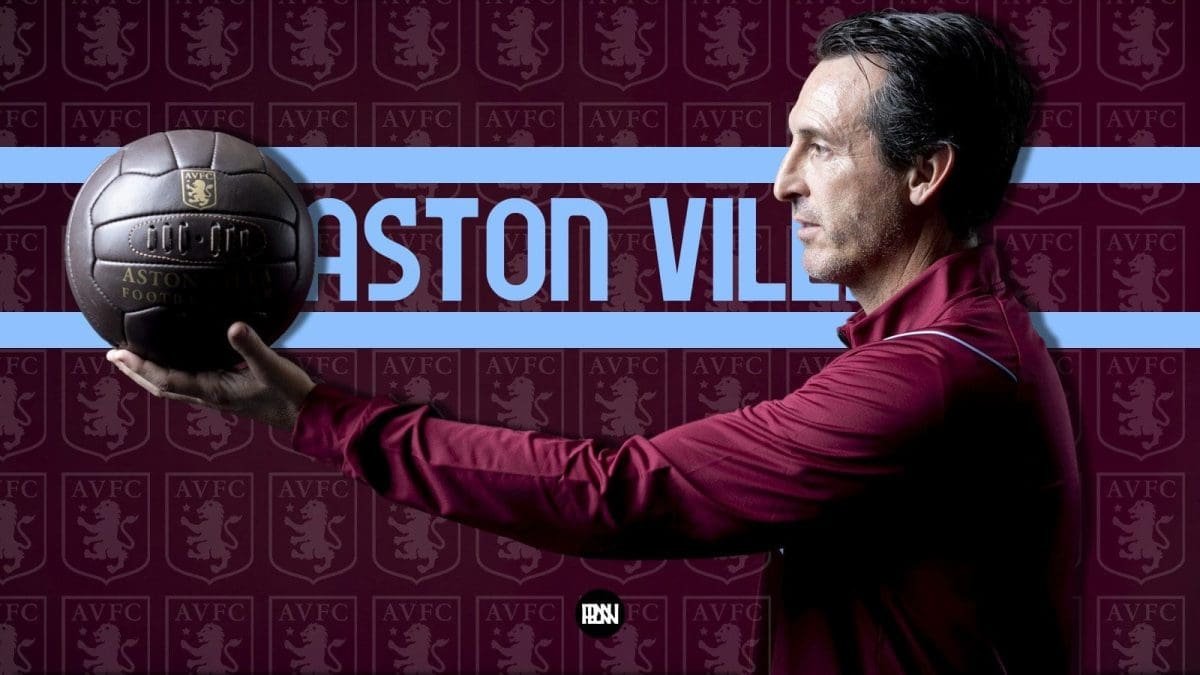Chelsea have proven to be the early pacesetters in the Premier League this season. The high-flying Blues extended their lead at the top of the table to three points after they added another impressive result to their ever-growing list, making light work of Newcastle United at St James’ Park. After a goalless first half that saw the Blues’ forwards being frustrated by the resilient Magpies defense, it took a special moment of individual brilliance from an unlikely source to break the deadlock. But in context of Chelsea’s season so far, the source might not have been too unlikely at all.
It was Reece James who unleashed a barnstormer of a hit with his left foot to send the Blues into the lead early in the second half. As Callum Hudson-Odoi dribbled to the touchline and sent in a speculative cross towards the six-yard area, the ball was cleared only as far as James on the other side of the box. With his mind firmly set on finding the goal, Reece James cut inside on his weaker foot to find the top left corner with a brilliant half-volleyed effort. It was the kind of sheer quality that is needed to break through a motivated backline, and the league leaders were a goal to the good.
It was only a matter of minutes before the right wing-back doubled the advantage with another sweet strike of the ball, this time with his right foot. While a late Jorginho spot-kick helped Chelsea seal the points with a 3-0 win, it was the Reece James show at St James’ Park – one of the Blues’ very own had come up with two excellent strikes to get them the three away points, with both Manchester City and Liverpool dropping points at home. While Ben Chilwell had scored for three straight league outings leading up to the game, it was his wing-back partner who stole the limelight instead – Chelsea’s wingbacks finding the goal seems to have become a bit of a pattern.
It would not be an exaggeration to say that the Blues’ wide men have been their biggest goal-scoring threats this season. While Saturday’s double meant that James is now the Blues’ top scorer in the Premier League with four goals, Chilwell has also scored thrice this season to be in hot pursuit. James also has registered two assists, as the wing-backs have directly contributed to nine of the Blues’ total of 26 league goals so far. But contrary to what the impressive attacking numbers might suggest, Thomas Tuchel asks a lot more of his wing-backs than just the occasional goal or assist.
While any system with three defenders at the back asks the wing-backs to stay wide and provide width, Tuchel has been known to ask something different from Chilwell and James this season. Apart from making the pitch wider to stretch the opposition, the Chelsea wing-backs have also played a different role this season whenever required – as a part of a tactical tweak. Against teams that overload the midfield and win the majority of second balls to choke Chelsea out of keeping possession, the Blues’ wingbacks have been playing a very different role so far this season.
The consecutive defeats to Manchester City and Juventus at the back end of September meant that Tuchel – usually a proactive figure who has had a solution for every problem until then – had a new issue to address. In both defeats, Chelsea struggled with two major issues – to create clear-cut chances, and feeding their focal point upfront with consistent service. While City pinned Chelsea in their half and completely cut off the supply to Romelu Lukaku and Timo Werner, Chelsea could not create any clear-cut chances up front against Juventus in Turin.
For the first time in his stint at Stamford Bridge, Tuchel looked like a man bereft of ideas. But proactive as the German always is, he quickly addressed the issue with a tactical tweak – one that his wing-back pairing was at the very centre of. Chelsea needed their dribblers to attack the opposition with more freedom than just the inside forward roles allow and to create space for the strikers attacking the box – which meant that instead of using the wing-backs for their traditional purpose of stretching the pitch, Tuchel deployed Chilwell and James as ‘inverted’ wing-backs.
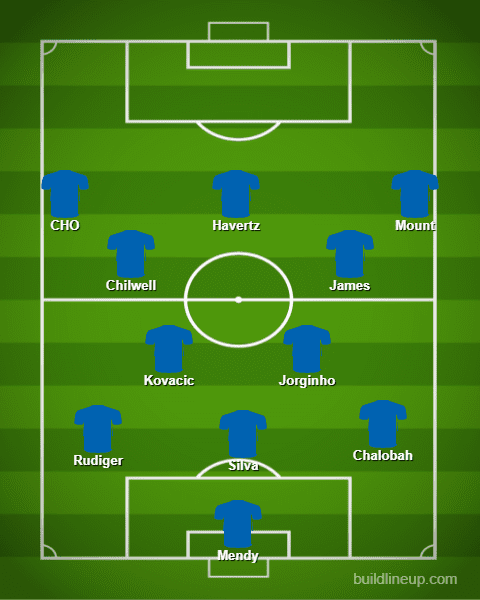
In definition, inverted full-backs offer everything contrary to what a regular full-back would. While a regular full-back widens the pitch, inverted full-backs stay central and act as auxiliary central midfielders and options to progress the ball and attack the half-spaces. A tactical tweak introduced in the Premier League by Pep Guardiola who credits it to the German game, the aim of using inverted full-backs is to have extra bodies in the centre of the pitch, an approach that works excellently for teams who build-up play through the centre like Tuchel’s Chelsea do.
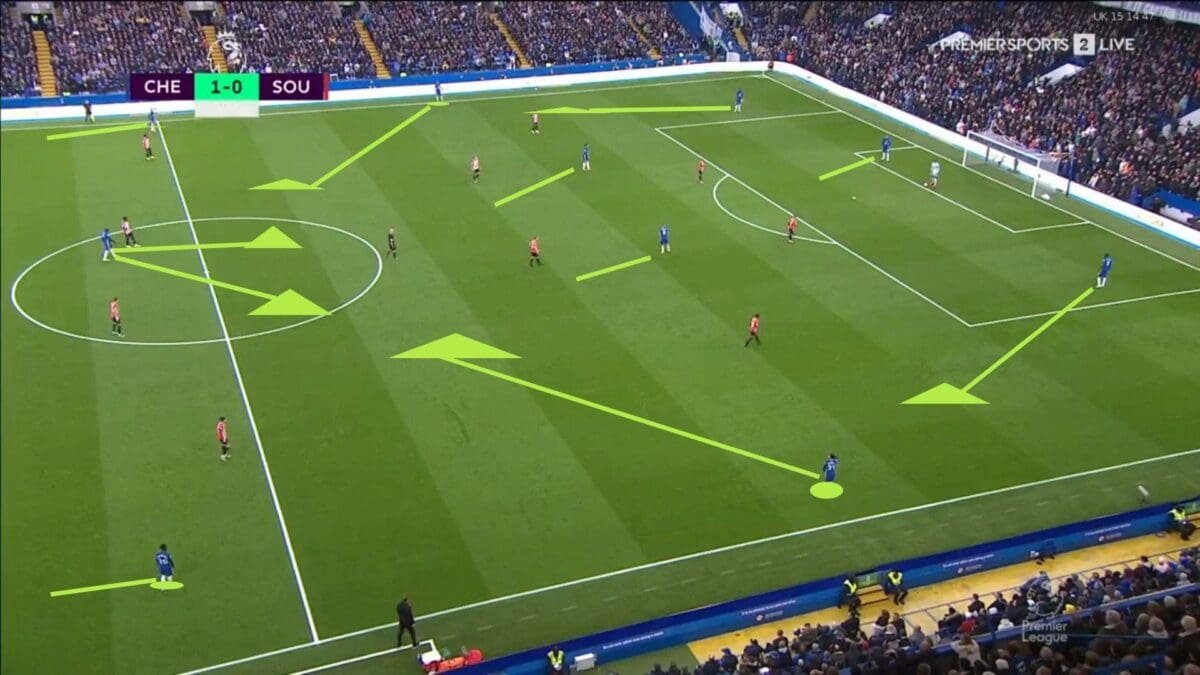
What the tweak aims to achieve is to make the wing-backs come into midfield rather than stay wide during the build-up, thus eliminating the redundancy of just making the wing-back pass back most times when the wide areas are blocked by opposition fullbacks and wingers. Instead, the wing-backs tuck in to be part of a midfield close together in between the lines, that can move the ball through more fluidly and still retain the defensive solidity that the Blues possess. We can see James and Chilwell as inverted wing-backs in this frame from the league outing against Norwich City.
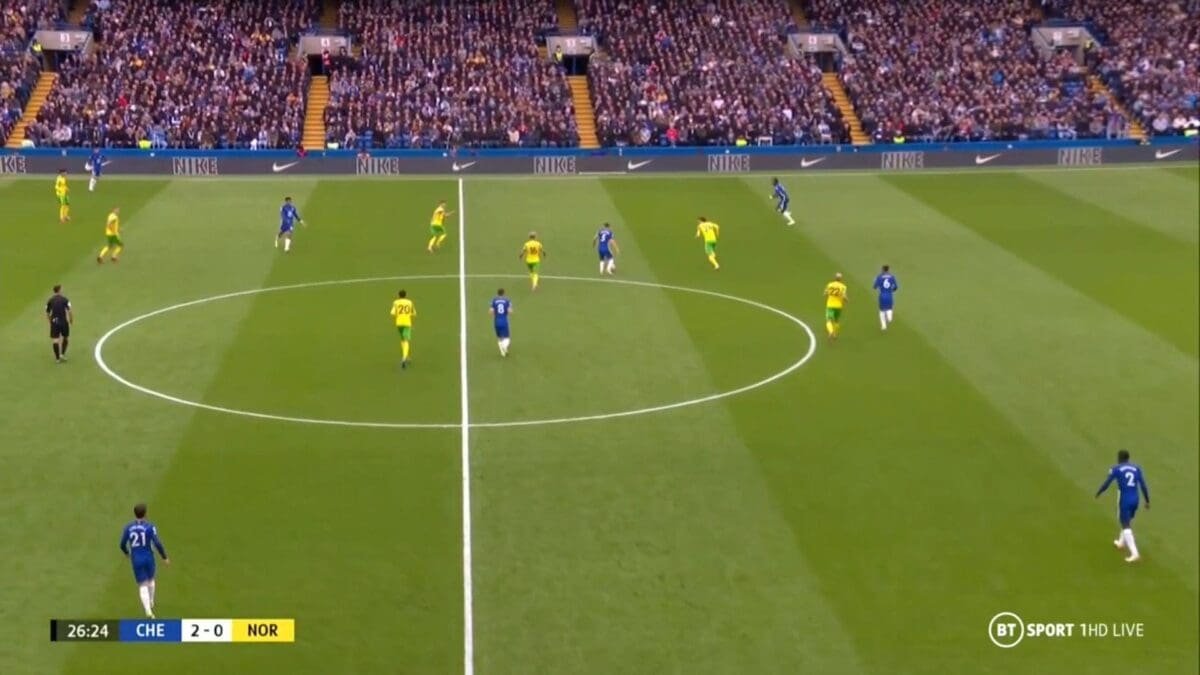
The technical ability that the English full-back pairing possess have helped them slot effortlessly into midfield, and act as auxiliary midfielders to help in the build-up as well as win second balls much more often. The inverted approach also requires flexibility on behalf of the wing-backs, who take turns with the inside forwards to tuck in and out – posing problems for the opposition full-backs. In most cases, the opposition full-backs follow James and Chilwell into the centre of the pitch, thus vacating the wide areas for Chelsea’s inside forwards to exploit well. As a result, players like Timo Werner and Callum Hudson-Odoi are at their best when they are running at defenders.
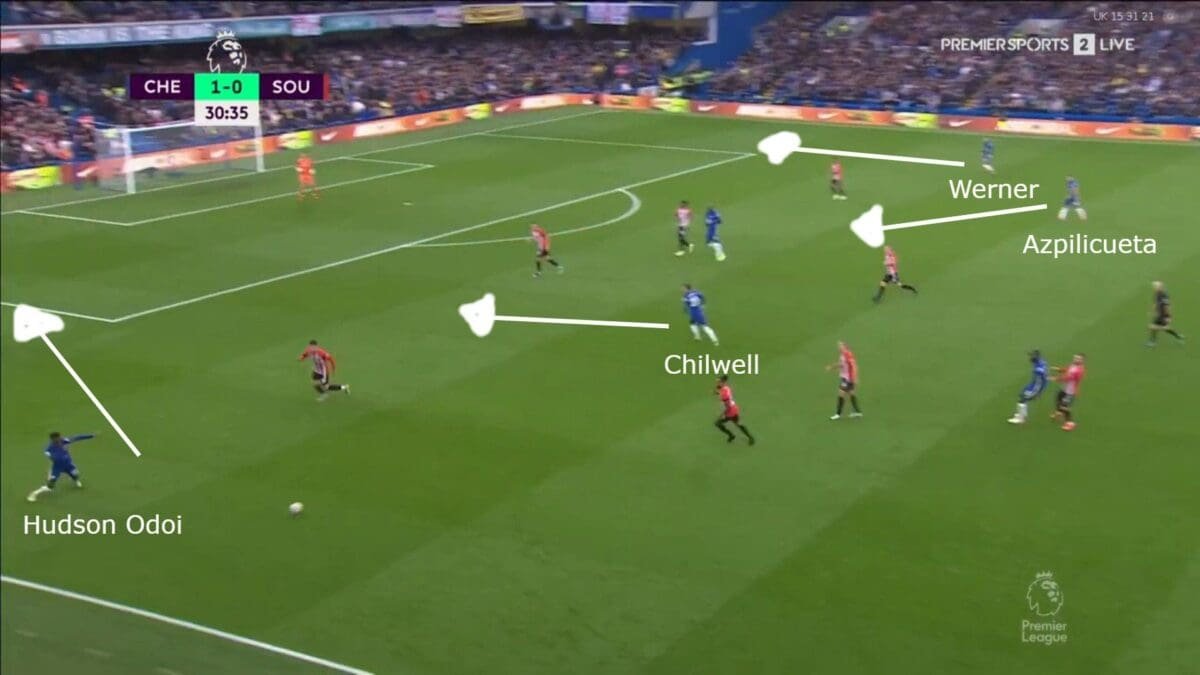
Apart from staying in the half-spaces, the wing-backs also try and get behind the opposition defences whenever they can. Chilwell and James often make a run in behind the last line of defense, facilitated by Kai Havertz dropping in deep and picking up the ball. Another benefit of having the inverted wing-backs is that whenever Chelsea loses the ball, it is very easy to counter-press the opposition to win the ball back. Chelsea’s counter-pressing was a prevalent feature of their game last season as well, but having inverted wing-backs now makes it easier for them to win the ball back.
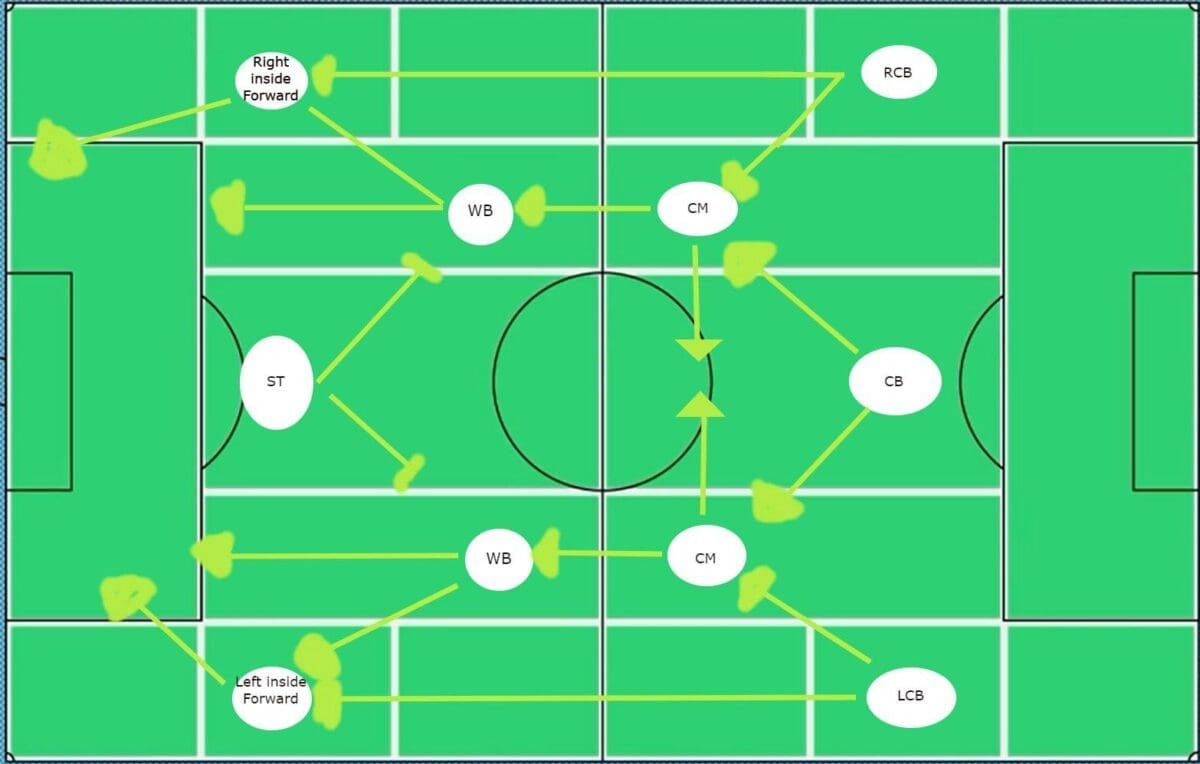
As a result, it can be concluded that the Blues’ wing-backs are extremely crucial to their system, even more so than just their goal-scoring exploits. James and Chilwell allow Tuchel to adopt a very different approach against some teams, and while they can tuck into midfield to provide extra bodies in the build-up, they can also run down the wing and come up with composed finishes more often than not.
Thomas Tuchel is a tactician who aims to fit a system that brings out the best of his players, and his Chelsea excel as a team – even when the forwards are not performing in front of goal, someone else always manages to find a way. One can always expect the Blues’ wing-backs to do their primary job and some more, and it is no coincidence that Chelsea finds themselves as the early favourites to win the Premier League this season.





